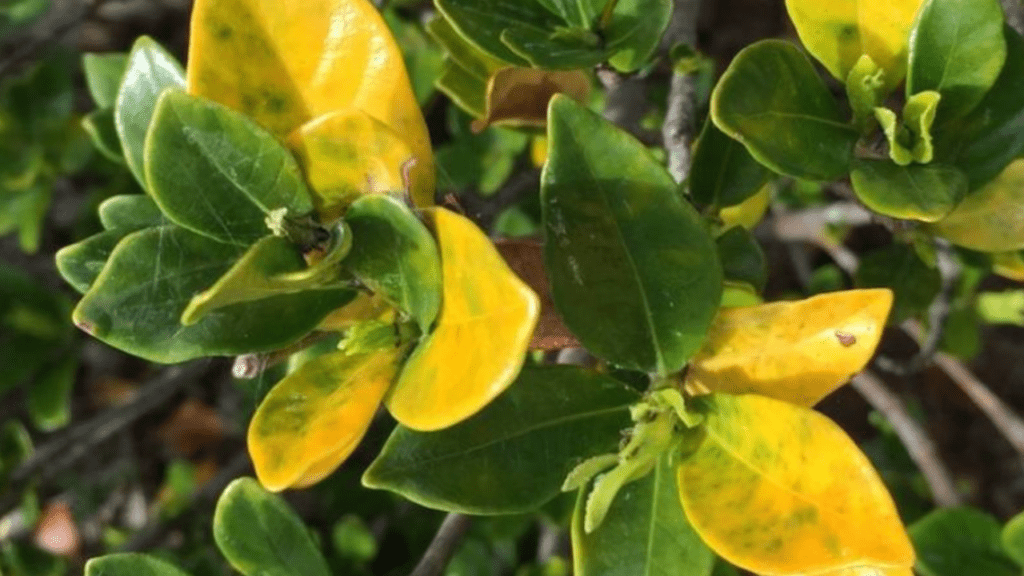
Yellow Gardenia Leaves: Common Problems and How to Fix Them
Yellow gardenia leaves can be a common problem for many gardeners, but it doesn’t have to be the end of the world. By understanding the common issues that cause yellow leaves on gardenias, you can take the necessary steps to fix them and bring your plants back to their healthy, vibrant state. Whether it’s due to overwatering, nutrient deficiencies, pests, or diseases, there are solutions to each problem that can help restore the beauty of your gardenias. Don’t let yellow leaves discourage you—take charge and give your gardenias the care and attention they need to thrive. With the right knowledge and action, you can turn those yellow leaves back to lush green, and enjoy the beauty of your gardenias once again.
Table of Contents
ToggleUnderstanding Yellow Gardenia Leaves
What Causes Yellow Leaves?
Yellow gardenia leaves can be a frustrating problem for any gardener, but it’s important to understand the common issues that cause this and how to fix them. Overwatering is a common cause of yellow leaves, as it can lead to root rot and nutrient deficiencies. Make sure you’re only watering your gardenias when the top inch of soil is dry. Nutrient deficiencies, such as iron or magnesium, can also cause yellow leaves. Using a fertilizer specifically formulated for acid-loving plants like gardenias can help provide the necessary nutrients. Pests and diseases can also be the culprit behind yellow leaves, so it’s important to regularly inspect your plants for any signs of infestation or infection.
Don’t let yellow leaves discourage you—take charge and give your gardenias the care and attention they need to thrive. With the right knowledge and action, you can turn those yellow leaves back to lush green, and enjoy the beauty of your gardenias once again. So, take the challenge of restoring your gardenias to their healthy state and set the goal of having beautiful, vibrant plants in your garden. With motivation and determination, you can overcome the challenge of yellow gardenia leaves and create a thriving, beautiful garden space.
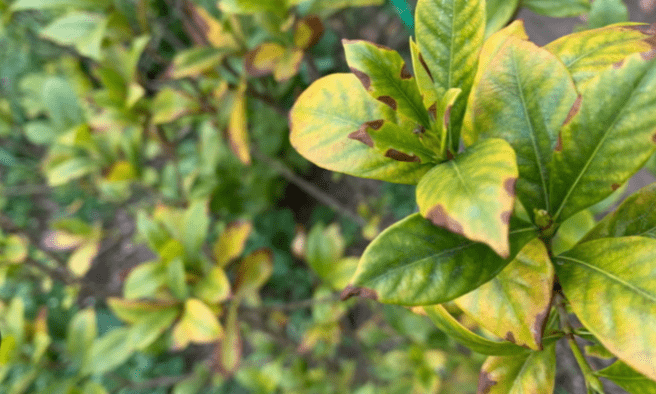
Why It Matters
Yellow leaves on your gardenias can be a sign of nutrient deficiencies, pests, or diseases. It’s important to take action and address the issue to ensure the health and vibrancy of your plants. By using a fertilizer specifically formulated for acid-loving plants and regularly inspecting for pests and diseases, you can provide the necessary care for your gardenias. Don’t let those yellow leaves discourage you—take charge and give your gardenias the attention they need to thrive. With the right knowledge and action, you can turn those yellow leaves back to lush green and enjoy the beauty of your gardenias once again. So, take the challenge of restoring your gardenias to their healthy state and set the goal of having beautiful, vibrant plants in your garden. With motivation and determination, you can overcome the challenge of yellow gardenia leaves and create a thriving, beautiful garden space.
Common Causes of Yellow Gardenia Leaves
Nutrient Deficiencies
Yellow leaves on your gardenias can be a sign of nutrient deficiencies, and it’s important to take action and address the issue to ensure the health and vibrancy of your plants. Your gardenias deserve the best care, and by using a fertilizer specifically formulated for acid-loving plants and regularly inspecting for pests and diseases, you can provide the necessary care for your gardenias. Don’t let those yellow leaves discourage you—take charge and give your gardenias the attention they need to thrive. With the right knowledge and action, you can turn those yellow leaves back to lush green and enjoy the beauty of your gardenias once again. So, take the challenge of restoring your gardenias to their healthy state and set the goal of having beautiful, vibrant plants in your garden. With motivation and determination, you can overcome the challenge of yellow gardenia leaves and create a thriving, beautiful garden space. Your gardenias will thank you for it!
Watering Issues
Another common cause of yellow gardenia leaves is watering issues. Overwatering or underwatering can both lead to yellow leaves and other problems for your gardenias. It’s important to pay attention to the watering needs of your gardenias and provide them with the right amount of water to keep them healthy and thriving. Make sure to water your gardenias deeply and thoroughly, allowing the soil to dry out slightly between waterings. This will help prevent waterlogged soil, which can lead to root rot and yellowing leaves. On the other hand, if you don’t water your gardenias enough, the leaves may also turn yellow and wilt. It’s essential to find the right balance and provide your gardenias with the proper amount of water to keep them looking their best. By paying attention to the watering needs of your gardenias and adjusting your watering schedule as necessary, you can help prevent yellow leaves and promote the overall health and beauty of your plants. Set a goal to become more knowledgeable about the watering needs of your gardenias and make it a priority to provide them with the proper care. With the right approach, you can overcome watering issues and enjoy vibrant, healthy gardenias in your garden. Don’t let yellow leaves discourage you—take action and set the goal of providing the best care for your gardenias.
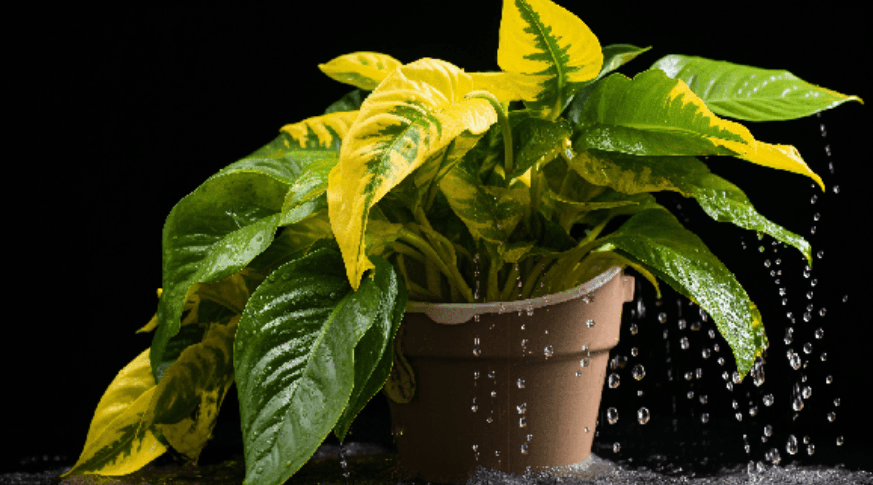
Soil pH Imbalance
can have a significant impact on the health and growth of your plants. If the soil is too acidic or too alkaline, it can affect the ability of your gardenias to absorb the nutrients they need to thrive. To ensure that your gardenias are getting the proper nutrients, it’s important to monitor the pH levels of your soil and make any necessary adjustments. Adding lime to acidic soil or sulfur to alkaline soil can help to balance the pH levels and create a more optimal growing environment for your gardenias. By taking the time to test and adjust the pH levels of your soil, you can prevent yellowing leaves and promote the overall health and vitality of your gardenias. Make it a goal to prioritize the pH levels of your soil and take proactive steps to create the best possible growing conditions for your gardenias. By doing so, you can overcome soil pH imbalance and enjoy beautiful, thriving gardenias in your garden. Don’t let soil pH imbalance hold you back—take action and set the goal of providing the best care for your gardenias.
Pests and Diseases
Can wreak havoc on your gardenias if left unchecked. It’s important to regularly inspect your plants for any signs of insect damage or disease. By taking proactive measures to protect your gardenias from pests and diseases, you can ensure their continued health and vitality. Consider using organic pest control methods to keep harmful insects at bay, such as neem oil or insecticidal soap. Additionally, regular pruning and proper plant spacing can help promote good air circulation and reduce the risk of disease. Set a goal for yourself to stay vigilant and proactive in monitoring and protecting your gardenias from pests and diseases. By doing so, you can enjoy beautiful, thriving plants all season long. Don’t let pests and diseases get the best of your gardenias—make it a priority to take proactive measures and set the goal of maintaining a healthy, pest-free garden.
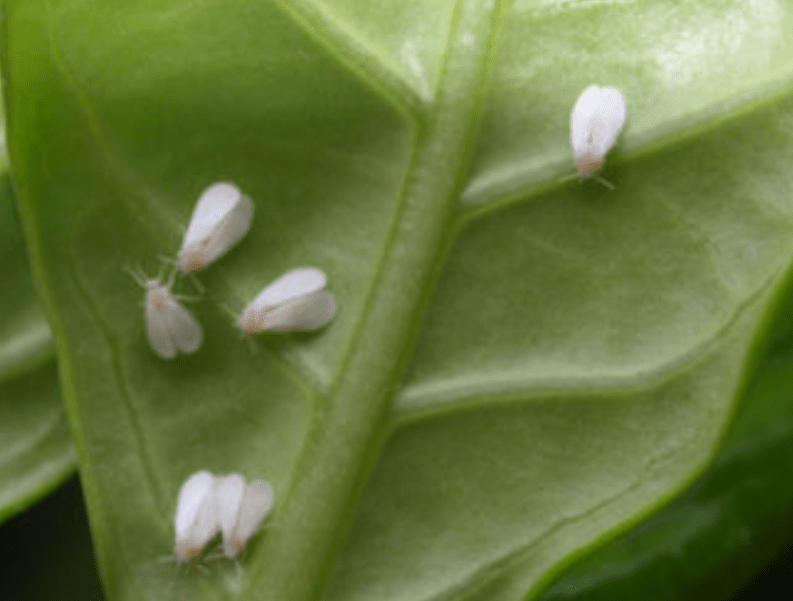
Environmental Stress
Can have a detrimental effect on your gardenias. Extreme temperatures, drought, and poor soil conditions can all lead to stress in your plants. It’s important to take proactive measures to protect your gardenias from environmental stress. Consider using mulch to help retain moisture in the soil and provide insulation from extreme temperatures. Additionally, regular watering and proper fertilization can help support the overall health and resilience of your gardenias. Make it a goal to create a healthy and supportive environment for your gardenias to thrive in, and be proactive in addressing any environmental stressors that may arise. By taking these proactive measures, you can help ensure the continued health and vitality of your gardenias, despite the challenges of the environment. Don’t let environmental stress get the best of your gardenias—set a goal to create a healthy and supportive environment for them to thrive in.
Preventing Yellow Gardenia Leaves
Proper Soil Preparation
Is key to ensuring the health and vitality of your gardenias. By taking the time to properly prepare the soil before planting, you can provide your gardenias with the essential nutrients and drainage they need to thrive. Start by testing the pH of the soil to ensure it falls within the optimal range for gardenias, which is slightly acidic. If necessary, amend the soil with organic matter to improve its texture and nutrient content. Proper soil preparation also involves ensuring good drainage to prevent waterlogged roots, which can lead to yellowing leaves and other issues. By taking the time to properly prepare the soil, you can set your gardenias up for success and prevent the frustration of dealing with yellow leaves later on. Your gardenias deserve the best, so make it a goal to give them the proper soil preparation they need to thrive.
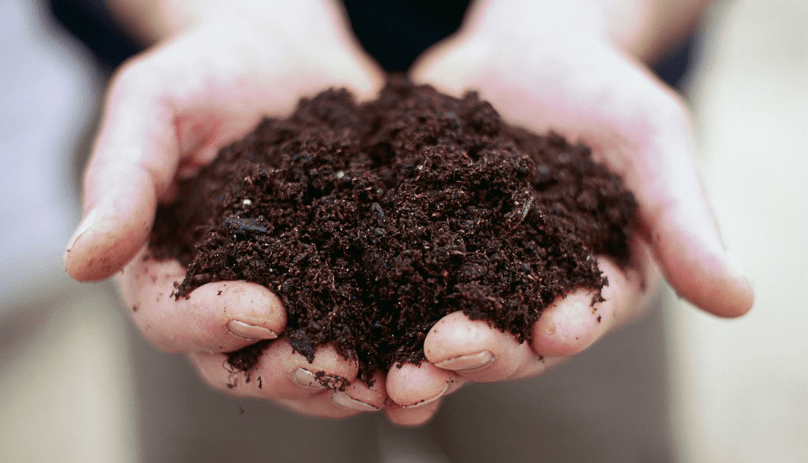
Regular Feeding Schedule
Is essential for the health and happiness of your gardenias. These beautiful plants need a steady supply of nutrients to thrive and produce those gorgeous blooms. By sticking to a regular feeding schedule, you can ensure that your gardenias have everything they need to grow strong and healthy. Look for a fertilizer specifically designed for acid-loving plants, like gardenias, and follow the instructions for application carefully. This will provide your gardenias with the essential nutrients they need to flourish. Don’t overlook the importance of regular feeding – it’s a simple way to support the long-term health and vitality of your gardenias. Make it a priority to establish a regular feeding schedule and watch your gardenias thrive like never before.
Consistent Watering Practices
Are crucial for the health and longevity of your gardenias. These beautiful plants thrive in moist, well-drained soil, so it’s important to maintain a regular watering schedule to keep them happy and healthy. Overwatering can lead to root rot, while underwatering can cause the leaves to wilt and the flowers to drop prematurely. By watering your gardenias consistently, you can ensure that they receive the moisture they need to thrive. Pay attention to the soil moisture levels and adjust your watering schedule as needed, especially during hot, dry weather. Consistent watering practices are the key to vibrant, healthy gardenias, so make it a priority to give your plants the hydration they need to flourish. Your gardenias will thank you with beautiful, lush blooms and green foliage.
Monitoring and Maintaining Soil pH
Is essential for the health and growth of your gardenias. These beautiful plants thrive in acidic soil with a pH level between 5.0 and 6.5. It’s important to regularly test the pH level of your soil and make any necessary adjustments to ensure that it remains within the ideal range for your gardenias. Adding sulfur or aluminum sulfate to the soil can help lower the pH level if it becomes too alkaline, while adding lime can raise the pH level if it becomes too acidic. By monitoring and maintaining the soil pH, you can provide your gardenias with the optimal growing conditions they need to thrive. This will result in vibrant, healthy plants with beautiful blooms and lush foliage. Don’t overlook the importance of soil pH in the care of your gardenias – it’s a crucial factor in their overall health and longevity. Keep a close eye on the pH level of your soil and make any necessary adjustments to ensure that your gardenias continue to flourish.
Pest and Disease Management
Is crucial for maintaining the health and beauty of your gardenias. Regularly inspect your plants for any signs of pests or diseases, such as aphids, scale insects, or powdery mildew. If you notice any issues, take immediate action to address them. There are a variety of organic and chemical pest control options available to effectively manage and eliminate pests and diseases. Additionally, proper watering and fertilization can help your gardenias resist pests and diseases. By providing your plants with the right care and attention, you can ensure that they remain healthy and vibrant. Remember, prevention is key – regularly monitor your gardenias for any signs of trouble and address any issues promptly to keep them thriving. With the right approach to pest and disease management, you can enjoy the beauty of your gardenias year after year.
Treating Yellow Gardenia Leaves
Immediate Actions
If you notice any yellowing leaves on your gardenia plants, it’s important to take immediate action. Yellow leaves can be a sign of nutrient deficiency, pests, or disease. Regularly inspect your plants for any signs of issues and take action as soon as you notice them. This could include using organic or chemical pest control options, adjusting your watering and fertilization routine, or seeking professional help if the issue is more serious. By addressing the problem promptly, you can help your gardenias remain healthy and vibrant. Don’t wait until the issue becomes severe – take immediate action to keep your gardenias thriving. With the right care and attention, you can enjoy the beauty of your gardenias year after year.
Correcting Nutrient Deficiencies
Is essential for the health and vitality of your gardenia plants. If you notice yellowing leaves, it could be a sign that your plants are lacking essential nutrients such as nitrogen, iron, or magnesium. To correct this, you can apply a balanced fertilizer specifically formulated for acid-loving plants like gardenias. This will help provide the necessary nutrients to your plants and promote healthy growth. Additionally, you can also consider adding organic matter such as compost to improve soil fertility and provide a steady source of nutrients for your gardenias. It’s important to address nutrient deficiencies promptly to ensure the overall health and longevity of your gardenias. By taking the necessary steps to correct nutrient deficiencies, you can help your gardenias thrive and continue to add beauty to your garden for years to come.
Adjusting Watering Practices
Is crucial for the health and well-being of your gardenia plants. Overwatering can lead to root rot and other fungal diseases, while underwatering can cause stress and wilting. It’s important to find the right balance and adjust your watering practices accordingly. Pay attention to the soil moisture and only water when the top inch of soil is dry. Additionally, consider using a soaker hose or drip irrigation system to provide a slow, steady supply of water to your gardenias. This can help prevent waterlogged soil and ensure that your plants receive the right amount of hydration. By adjusting your watering practices, you can help your gardenias thrive and flourish in your garden. So, take the time to monitor the soil moisture and make the necessary adjustments to keep your gardenias healthy and vibrant. Your efforts will be rewarded with lush, beautiful blooms and healthy foliage.
Managing Pests and Diseases
Is crucial to maintaining the health and beauty of your garden. It’s important to be proactive in identifying and preventing pests and diseases from causing damage to your plants. One effective method is to regularly inspect your garden for signs of pests or disease, such as discolored leaves, holes in the foliage, or unusual spots or growths. By catching these issues early, you can take swift action to address them and prevent further damage to your gardenias. Additionally, consider using natural pest control methods, such as neem oil or insecticidal soap, to deter pests without harming beneficial insects or the environment. It’s also important to practice good garden hygiene by removing any dead or diseased plant material and properly disposing of it to prevent the spread of disease. By staying vigilant and proactive in managing pests and diseases, you can help your gardenias thrive and ensure a beautiful, healthy garden for years to come.
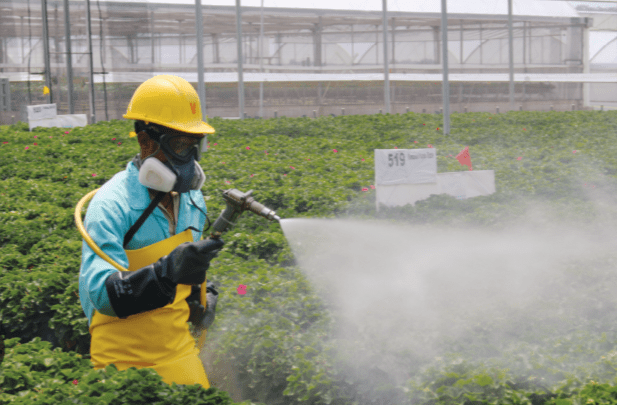
Alleviating Environmental Stress
Is crucial for maintaining the health and beauty of your garden. One of the most important aspects of alleviating environmental stress is managing pests and diseases. It’s essential to be proactive in identifying and preventing pests and diseases from causing damage to your plants. Regularly inspecting your garden for signs of pests or disease, such as discolored leaves or unusual growths, can help you catch these issues early and take swift action to address them. Using natural pest control methods, like neem oil or insecticidal soap, can deter pests without harming beneficial insects or the environment. Additionally, practicing good garden hygiene by removing dead or diseased plant material and properly disposing of it can prevent the spread of disease. By staying vigilant and proactive in managing pests and diseases, you can help your gardenias thrive and ensure a beautiful, healthy garden for years to come. Let’s work together to create a vibrant and thriving environment for our gardenias.
In conclusion, the key to fixing yellow gardenia leaves is to understand the root cause of the problem. It could be due to overwatering, nutrient deficiency, or even pest infestation. By taking the time to properly diagnose the issue, you can then implement the necessary steps to fix it and ensure your gardenias thrive. Don’t let your beautiful plants suffer – take action and follow our expert advice to keep your garden looking stunning. Your gardenias will thank you for it!
Frequently asked questions And Answer
There are a few common reasons for yellow gardenia leaves, including overwatering, underwatering, nutrient deficiencies, and pests. It’s important to identify the specific cause in order to properly address the issue.
If the yellowing is due to overwatering, reduce the frequency of watering and ensure proper drainage. If it’s due to underwatering, increase watering frequency and monitor the soil moisture. Nutrient deficiencies can be addressed with the appropriate fertilizer, and pests can be controlled with insecticidal soap or neem oil.
In many cases, yes, yellow gardenia leaves can be saved with the right care and attention. By addressing the underlying issue and providing the necessary care, you can help your gardenia plant recover and thrive.
To prevent yellowing leaves in the future, it’s important to maintain proper watering, provide the necessary nutrients, and regularly inspect your plants for signs of pests or disease. Additionally, ensuring proper sunlight and temperature conditions can help promote overall plant health.
It’s generally best to prune yellow gardenia leaves, as this can help improve air circulation and remove any diseased or damaged foliage. Be sure to use clean, sharp pruning tools and make clean cuts to promote healthy regrowth.
Some natural remedies for yellow gardenia leaves include using organic fertilizers, such as compost or fish emulsion, to provide essential nutrients. Additionally, introducing beneficial insects or using natural pest control methods can help address pest-related yellowing.
Signs of nutrient deficiencies in gardenia plants can include yellowing or browning of the leaves, stunted growth, and poor overall plant health. It’s important to identify the specific nutrient lacking and provide the appropriate remedy.
Yes, environmental factors such as temperature extremes, improper sunlight, or poor soil conditions can contribute to yellowing gardenia leaves. It’s important to provide the right growing conditions to promote healthy foliage.
